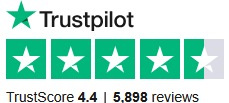is your cooker surface / fascia getting too hot ?
- Home /
- News & Advice /
- is your cooker surface / fascia getting too hot ?
- August 7th, 2010
- 1 Comment
- Posted in cooking
Surface Temperature Test
All appliances are manufactured and tested to satisfy the surface temperature requirements contained in BSEN 60335-1.2002.
Components which are designed to be touched to operate the cooker, such as controls and handles have lower limits than those which may be accidentally touched for example door panels and sides. Limits also vary depending upon the component material (see Standard temperature limits)
Test Equipment:
• Hand held digital thermometer and probe
• Test record sheet
Method:
1. Switch oven on and set to Gas mark 5 or 200°C for electric ovens for a period of 1 hour*
2. After 1 hour record the room temperature (ambient)
3. Place probe on components/panels which require testing and record all temperature results
* Note – If reported high temperature concerns are with the control panel or control knobs then additionally 4 pans of water (½ full) should be simmered during the 1 hour heat up period, also operate the grill on maximum for the last 15 minutes of the 1 hour test, ensuring that the grill pan is correctly positioned on the runners and pushed fully into the grill chamber to the stop position.
Readings:
E.N 30 acceptable limits are the temperature rise of components above the room ambient.
To determine the rise deduct the room temperature from the actual temperature measured and this is the rise.
Standard temperature rise limits: For example:
Ambient room temp = 20°C
Actual component temp = 50°C
Rise temp = 30°C
Maximum allowable temperature rise limits for components which require touching to operate the cooker e.g. control knobs and handles
Metal…………………………..= 35°C
Glass…………………………. = 45°C
Plastic………………………… = 60°C
Maximum allowable temperature rise limits for components which DO NOT require touching to operate the cooker e.g. *Door panels, control panel facia
Metal…………………………..= 60°C (*45°C for door panels)
Enamel/Painted………………= 65°C (*45°C for door panels)
Glass…………………………. = 80°C
Plastic…………………………= 100°C
Note: There is no maximum temperature limit on working surfaces such as Hotplate tops or areas not accessible to a 75mm (3”) ball, such as gaps between doors and the cooker frame.
Kitchen Base & Wall Units Rise Temperature Rise Test
Introduction:
Certain types of vinyl or laminate kitchen furniture are particularly prone to heat damage, shrink back and discolouration. We cannot accept responsibility for the damage caused by normal use of the cooker to any material that de-laminates or discolours at temperatures less than 65°C above the room temperature.
Method for testing adjacent kitchen furniture is detailed below:-
Test Equipment:
• Hand held digital thermometer and probe
• Test record sheet
Method:
4. Switch oven to maximum setting for a period of 1 hour
5. After 1 hour record the room temperature (ambient)
6. Place probe on affected area of kitchen unit and record temperature results
Readings:
E.N 30 acceptable limits are the temperature rise of the adjacent kitchen furniture above the room ambient .To determine rise deduct the room temperature from the actual temperature measured.
For example:-
Ambient room temp = 20°C
Actual temp of kitchen furniture = 50°C
Rise temp = 30°C
Comments
Leave a Reply


Brian Buxton
Thursday, May 31, 2018 at 10:30 amVery helpful, but manufacturers are reluctant to tell us the actual temperature, which is the only way we can tell if it will severely burn a young child, particularly with double ovens, below worktop height.
After one hour at 220 deg c the glass doors of our Miele double oven are warm, but not so hot that I cannot touch them. In fact they are warm, but cool enough that I can comfortably touch them with delicate skin on my arm.
I understand that IKEA are quadruple glazed, but even they do not divulge the achieved temperatures.
Even the Which report were surprised when I told them yesterday, that we parents want to know of our children are safe with these things.
Years ago, we had a Belling double 90 extra, and the doors of that almost glowed!!